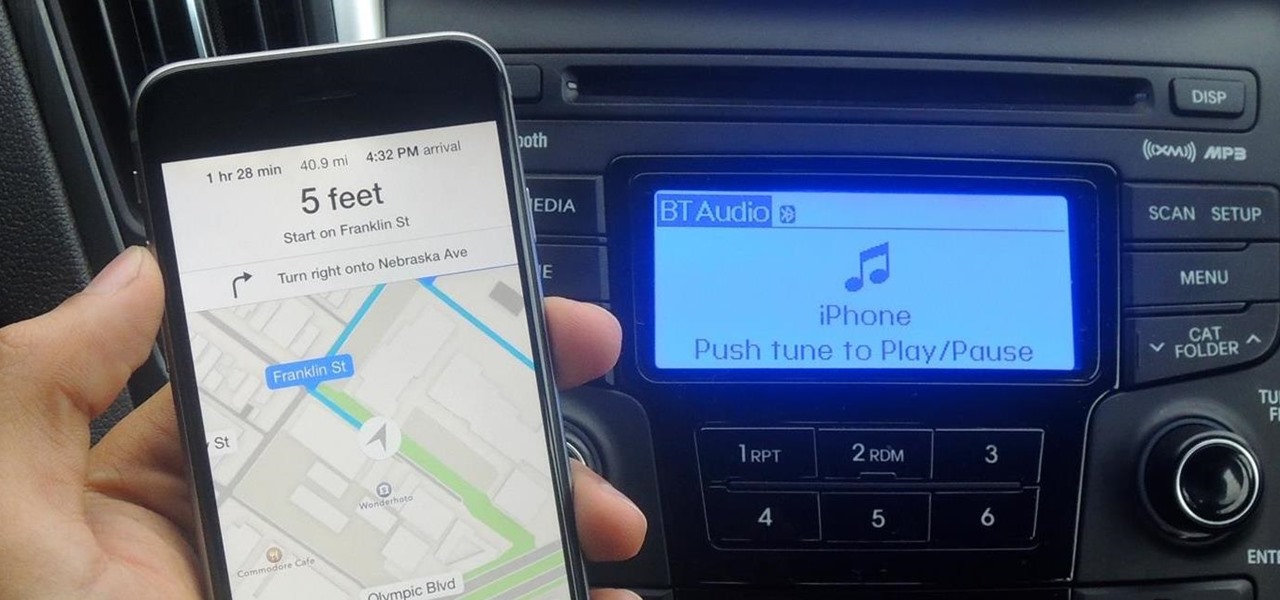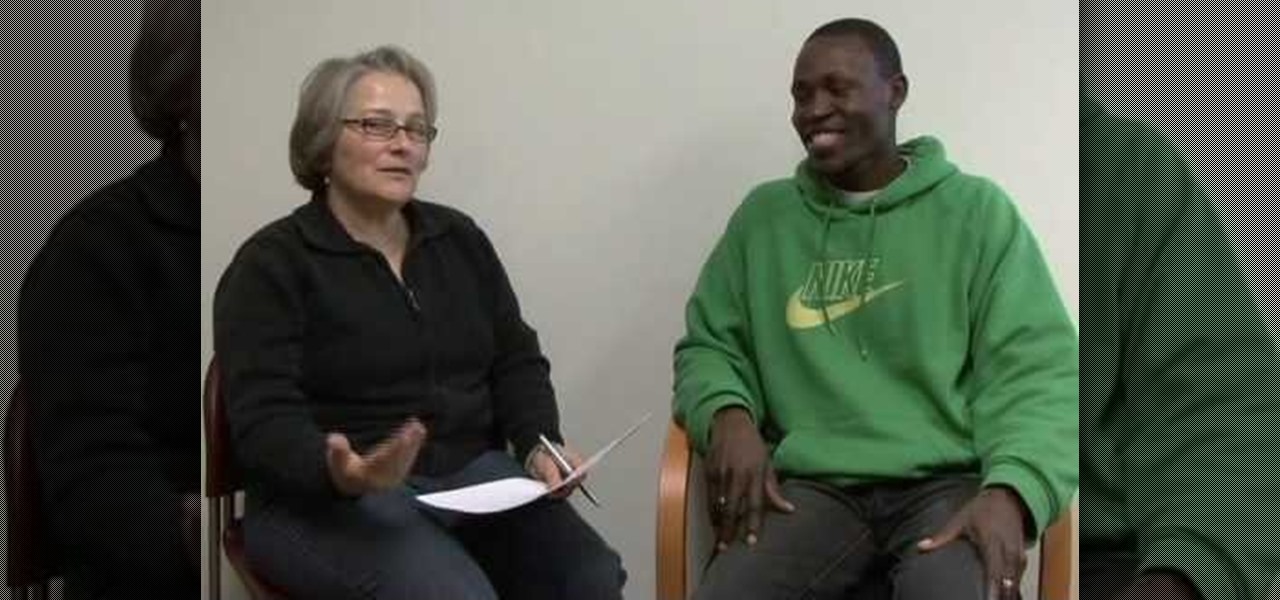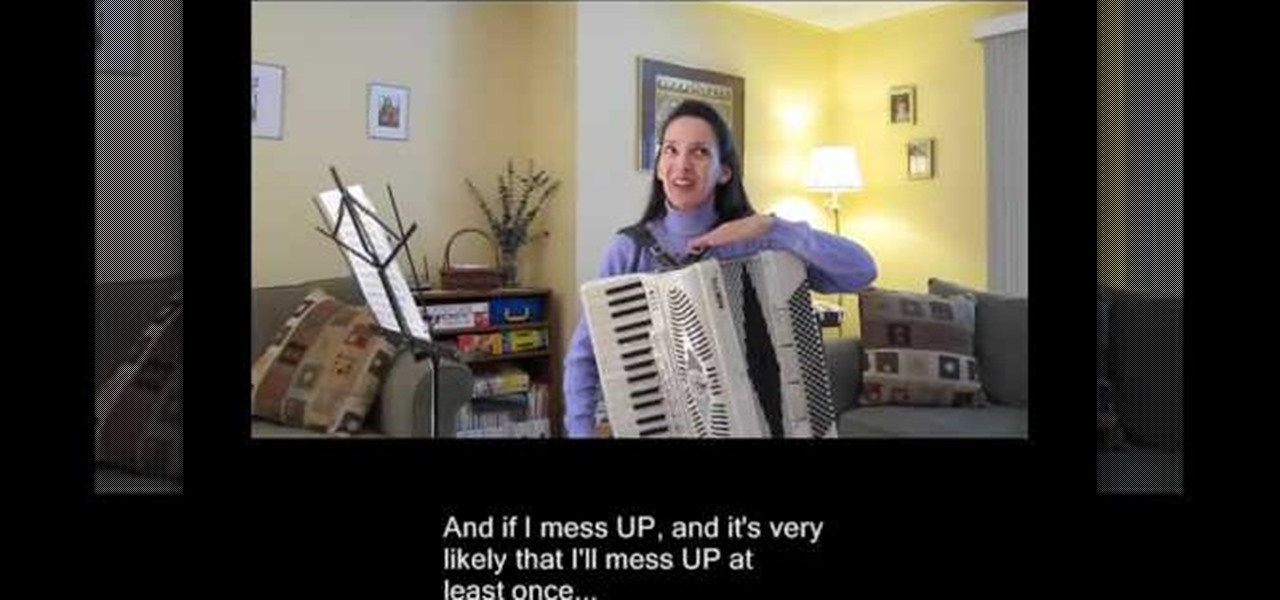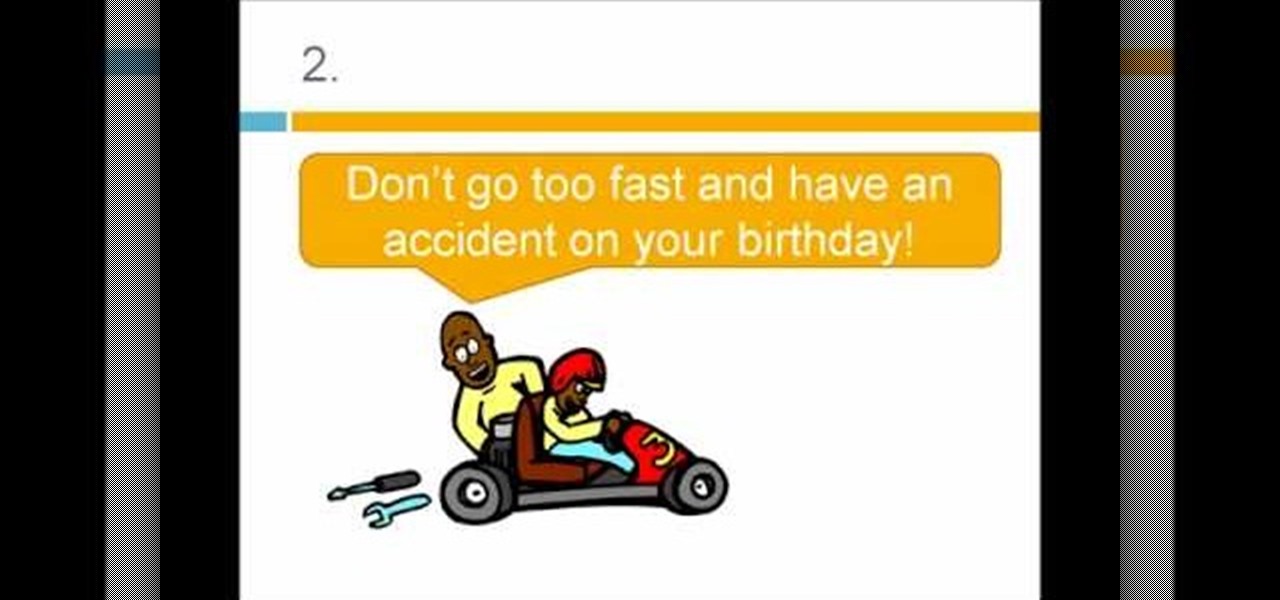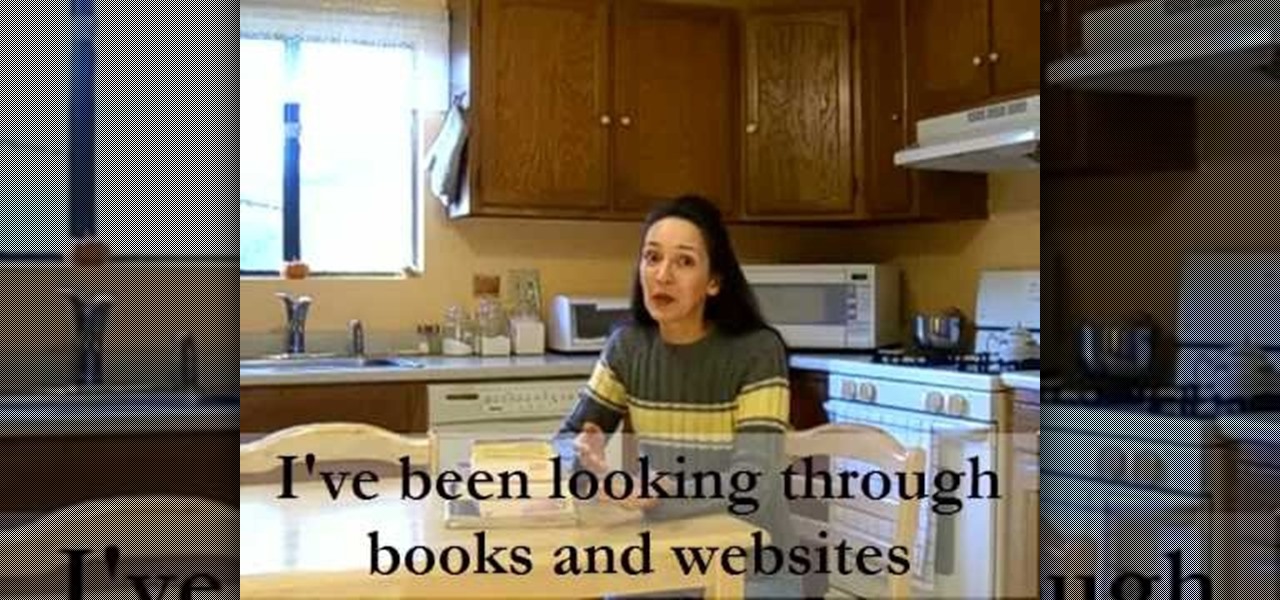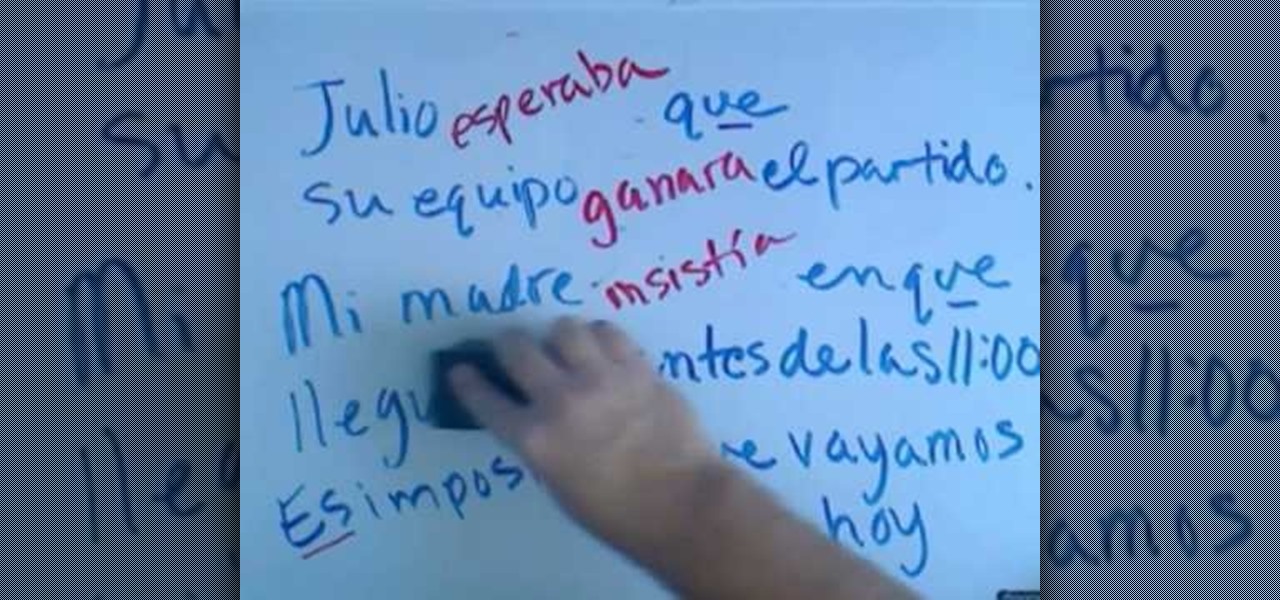
Planning a visit to China? These phrases may come in handy. Even if not, Mandarin Chinese is the most widely spoken language in the world, so it couldn't hurt to know a few phrases. Watch this video language tutorial and learn some basic Mandarin Chinese phrases.

Learn how to say "Do you speak English?" in Polish.

Learn how to say "I do not speak German or French or Italian or Spanish." in Spanish.

Learn how to say "Do you speak English?" in Spanish.

There is no English in this lesson but sometimes that is the best way to learn! Follow along and learn how to speak Spanish with a detailed yet intermediate class based on pictures.

Right now, Apple is testing two versions of iOS. On the one hand, you have iOS 13, buggy but feature-filled. On the other, iOS 12.4. The latter just got an update to the fifth developer and public beta versions, 13 days after the release of iOS 12.4 developer beta 4.

Newly appointed Ford Motor CEO Jim Hackett admitted yesterday that demand for driverless transportation could take many different forms and that Ford was rethinking how it would tailor its cars and mobility services for self-drive modes of transportation in the future.

Learn how to conjugate the French verb "parler" (to speak) in the present tense

Maps is great for getting turn-by-turn directions in unfamiliar territory, but how many times does your favorite song have to be rudely interrupted by that navigation voice telling you to turn left or right? Yes, you need those spoken directions to get to where you're going, but you also need to hear every part of your song, right?

Are your relatives coming over for Thanksgiving? It's probably hard enough entertaining the adults with conversation while trying to keep the kids from drawing on your walls, and probably even harder when some of your relatives only speak a foreign language that you don't speak.

In this video from pxmedia Lisa and Lionel teach us how to say basic greetings and more in Haitian Creole. Some basic greetings that are gone over here are "Hello", "How are you", and the various responses to that question. "What is your name" is another question they translate. And "My name is". "Please" and "thank you" are next to be discussed along with "You're welcome." "Excuse me", and "bye" are next up. Two important things are "I cannot speak Creole" and "Do you speak English?" Next to...

In this video Patricia Stark shows how to display voice mail confidence. Studies show that it takes only three seconds for somebody to size you up over the phone. You can know a lot about the person speaking on the other end of the phone and so you need to sound very confident while speaking to other persons. It is proved that when you smile when you are speaking on the phone it changes the whole delivery of your tone and if you are sitting there carelessly it will be reflected in your voice....

Do you constantly let people walk all over you? Go from doormat to dominator with this advice. You Will Need

This instructional video provides insight into the English language to teach people who are learning to speak English how to pronounce phrasal verbs. A phrasal verb is a verb + a particle, such as "drive up", "end up", and "drive back". The video shows viewers how these phrasal verbs are used in a sentence as well as what these phrases mean. In terms of pronunciation, there are three basic patterns which are discussed to show where the words are stressed in the context of a sentence which are...

In this tutorial, we learn how to speak Spanish: Antes de / despues de + verb. If you want to say "I eat breakfast before I go to school" you will say "yo desayuno antes de ir a la escuela". You will change a verb in the phrase depending on where it is placed in the sentence. If you change this same example sentence around, it will sound different in the Spanish version of the same exact sentence than the original. To express the opposite idea, you will change the end of the verb to state the...

In this tutorial, we learn how to speak English: Imperatives or reporting verbs. Imperative sentences are sentences like "open it!", where you are asking someone to perform an action. You can also say this in a nice fashion, asking "please open it". There are many different forms of imperative sentences, which include: commands/orders, directions, instructions, requests, and warnings. All of these different types of sentences are asking someone to do something, just changing up the way they d...

In this tutorial, we learn how to speak English using the true "t" and the flap "t". You will notice as you say different words in English that have the letter "T" that it sounds differently depending on the word it is in. The words "batter" and "latter" have a different sound to them than "hearty" and "thirty". Look at two words with the letters in them and find which one has the flap T in it. Say these words out loud so you can better hear what the different in the pronunciation is. This le...

In this video, we learn how to speak Spanish using present tense AR verbs. "Nosotros" means "we", "nosotras" means we as well, it's just talking about a female while the other is talking about a male. Common "ar" verbs include: necesitar, patinar, practicar, terminar, tocar, trabajar, nadar, hablar. These mean (in order): to need, to skate, to practice, to fish, to play, to work, to swim, and to talk. When you are talking about a male, female, or group of people you need to change the last pa...

You could go out and buy a bike, but what fun would that be? Make your own! One main step in making a bike is lacing your wheel. In this great two-part video you will learn how to lace the drive side and non drive side spokes on a rear 32 wheel with the right patterns. Mike goes into great detail on which holes to lace first and what patterns work the best.

In this free video language lesson, you'll learn how to ask an Italian person if they speak English: "Parli inglese?" While Italian isn't necessarily a very difficult language for an English-speaker to learn, many stumble when it comes to pronunciation. Fortunately, the Internet is awash in clips like this one, which make learning both vocabulary and proper pronunciation a very easy task. For more information, and to get started using this useful Italian phrase yourself, watch this video guide.

Are your Arabic skills lacking? In this video, you'll learn how to speak and write the numbers one hundred through nine hundred in Arabic. After a few tries, your accent will be so convincing people will mistake you for a native. Try it out!

In this video, JD, from Tying It All Together, demonstrates how to tie a knot known as a "Ringbolt Hitch". This is also known as "coxcombing". This type of knot was once a common tie used by sailors to dress-up items and parts of their ships. When tying a wheel, a "Turk's Head" knot was used to cover the part of the wheel where the two ends of the ring bolt met, which would firm up the hitch, and help to keep the tied ends from unraveling. It is a nautical tradition to use this type of knot t...

Attention Tolkien fans... Ever wanted to learn to speak Elf? In this video, learn the vowels, consonants, numbers, and how to write your name in "Elvish".

This lesson is part of a series of video language classes which will build a solid foundation for learning how to speak Arabic. The instructor in these instructional videos is a native Arabic speaker who started making his own teaching tutorials in an effort to demonstrate clearly how the language is really spoken back in his home in the Middle East. In this video segment, the instructor will focus on accent marks in the Arabic alphabet.

Learn English with Mr. Duncan as he provides basic grammar instruction and speaks in basic English phrases. Check out this English language tutorial to learn the English phonetic alphabet. Some people think that this is a helpful tool for improving spoken English, while others feel that phonetics slows down the process of learning English and makes it dull and boring! Regardless, this language lesson is perfect for ESL students or anyone looking to improve their English pronunciation skills. ...

Learn how to say "I don't speak Italian" in Polish.

Learn how to say "I don't speak French" in Polish.

Want to know what he's really thinking? Watch Love U to learn the language of man speak! This will save you time and heartache.

Watch this one minute instructional video on how to speak basic words in Irish Gaelic.

Watch this one minute instructional video on how to speak Polish.

When using Group FaceTime with more than a handful of people, all of those participants in one chat can be difficult to follow. That's why Apple automatically enlarges the tiles for people who are currently speaking, bringing them into the forefront. However, all of that zooming in and out can get pretty distracting, and now there's a way to disable it whenever you need to.

Well, we have some potentially good news for those wanting to experience Magic Leap. The ultra-secretive company seems to be planning a big year in 2017.

This video gives tips on how to improve your speaking in public and on camera abilities.

Running over someone's head or burying them alive so that they can rise from the grave are dangerous, and not worth using in filmmaking generally speaking. But yay, there are special effects! Watch this video for a guide to running over someone's head with a car or burying them alive for your film using After Effects and some fun props.

People respond so much better to requests when you add the word "please" in front of them. So if you're stuck in a foreign, Spanish-speaking country, it's vital that you add "please" when necessary to establish good manners, so that people will help you out.

In this video, we learn how to say "here you are" in Polish. First, turn your audio up on the screen so you can hear how the speaker is saying each of the different words. You may need to pause it at different parts so you can speak like he is speaking. Try to break up the sentence into different parts so you can practice just one word instead of the whole group of words. When you are finished learning each word, you can practice saying all of them together and learn the entire sentence! Have...

In this video, we learn how to speak English: An introduction to phrasal verbs. Phrasal verbs are also called two-part and three-part verbs. This is a verb and one or two other short words. Together as a phrase these have a special meaning. The other words are called particles, which come together with the verb to make a different definition. Particles can change the word "figure" to "figure out" and the word "look" to "look through". These particles at the end of the verb change how the word...

In this video, we learn how to speak English: Reported Speech/Reference Words. Reported speech is reporting another person's words or telling what someone else said. Indirect speech doesn't use the use the exact words that we use. Examples of reference words are: her, she, herself, him, and himself. Types of references can be pronouns or possessive adjectives. Listen to who the speaker is so you can change the reference words so that the statement is logical. Use this example as a reference: ...

In this video, we learn how to use Hindi words for: Where, here, there, come and go. As you learn how to say these different words, you will need to look at a visual key so you can see how they are written in Hindu. You will also need to listen to how the words are said, because there is a very different dialect with speaking Hindi than there is when speaking English. These mean the same things as they do in English, and can be used in the same sentences as well. Once you get the hang of lear...

In this video, we learn how to use the imperfect or past subjunctive in Spanish. When you are speaking in first person, you are going to use the singular "yo". If you are speaking in plurals, you will us "os", such as "nosotros". For second person familiar, you will use "tu", then for second person formal you would say "usted". For third person, you will say "el". When you talk in second person familiar and formal you will stress the second syllable in the word. Dissect the sentence to find o...










